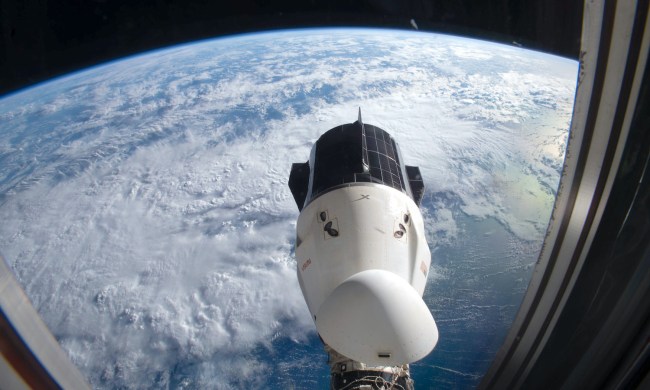SpaceX has suffered a setback during testing of its Starship rocket, with its SN1 prototype appearing to implode during a pressure test.
Video of the test was captured by a Boca Chica, Texas resident and was shared on the SPadre YouTube channel dedicated to footage of SpaceX construction and launches. It appears to show the Starship SN1 pressure test in slow motion, with an explosion of gas or vapor pouring out of the bottom of the structure before the entire thing blows and is launched into the air.
A second video from NASASpaceflight shows the section of the Starship crumpling under the pressure and being deformed as it is launched into the air. The section was destroyed in the event.
The test was a liquid nitrogen pressure test, according to the videos, conducted with inert materials. The tank holding the pressurized nitrogen appears to have failed structurally, causing it to be launched into the air and implode. There are no reports of any injuries caused by the test, and SpaceX has not made any comment on the matter.
SpaceX has had its share of troubled tests in the past. In a ground test of the Starship late last year, the Mk1 prototype blew its top, with the upper part of the rocket sent sailing into the air. And earlier last year, during testing for its Crew Dragon capsule which will eventually ferry astronauts to the International Space Station, a capsule exploded during testing due to a leaky valve.
The company has also deliberately blown up its rockets for testing purposes, such as earlier this year when it deliberately exploded a Falcon 9 rocket to test the escape systems of its Crew Dragon capsule.
Failures during testing are part and parcel of the development of new technologies, and SpaceX CEO Elon Musk has always been sanguine about such issues.
“When trying different things, you have to have some acceptance of failure,” Musk said in an interview at the Air Force Association’s Air Warfare Symposium on Friday before the test failure occurred. “Failure must be an option. If failure’s not an option, there are extremely conservative choices. And you may get something even worse than lack of innovation. Things may go backward.”



